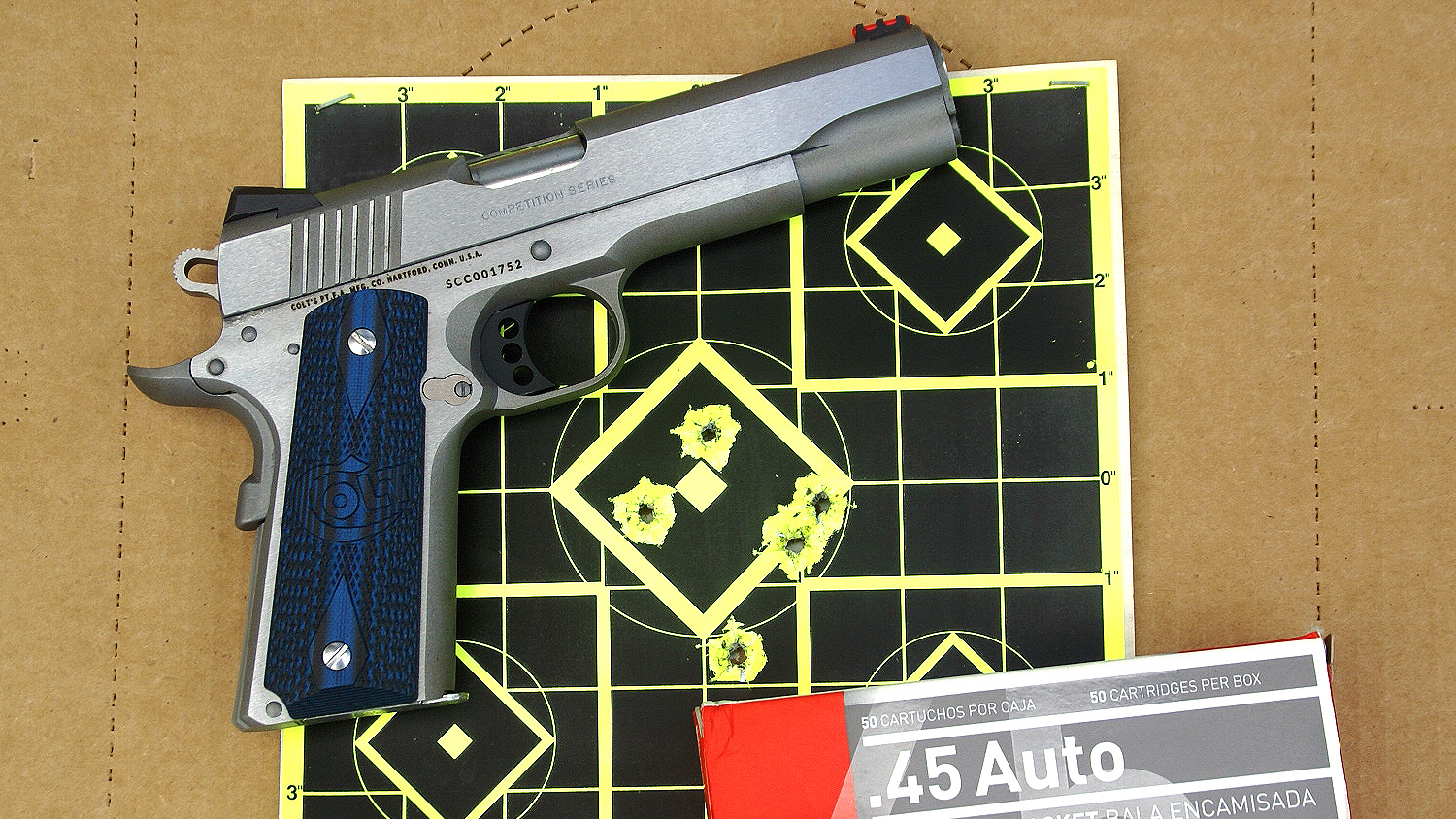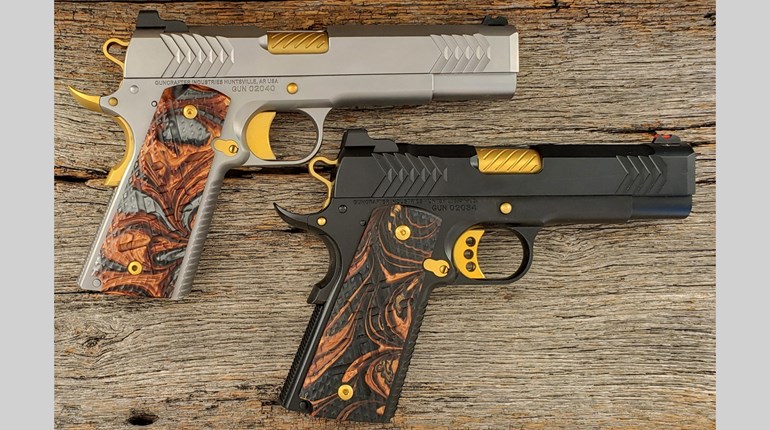
Despite entering it’s second century of service while facing serious competition from far newer designs, U.S. shooters continue their love affair with John Browning’s classic 1911. That’s especially true among competitive shooters.
The 1911 is a mainstay in NRA Precision (Bullseye) competition, but sees as much or more use among Action Pistol shooters. The IDPA Custom Defensive Pistol division (CDP) was created for the 1911 and the .45 ACP caliber is mandated. Their Enhanced Service Pistol division (ESP) is open to the 1911 with a minimum caliber of 9 mm, and I remember one or more IDPA National Championships won with a Colt 1911 9 mm. USPSA/Steel Challenge Single Stack division (SS) requires a 1911, in either Major or Minor caliber, and it’s also popular in Limited 10 (L10) in Major or Minor calibers.

Colt’s upgraded Competition series is a good fit. It’s available in both blued and stainless steel in calibers .45 ACP and 9 mm ($899 blued, $999 stainless) and in .38 Super in stainless ($1,049). The .45 ACP comes with two flush fit 8-round magazines, while the 9 mm and .38 Super are supplied with two flush fit nine-round magazines.
The magazine capacity allowed in ESP and L10 is slightly above what the factory magazines provide. But magazine extension base plates are readily available from Chip McCormick and Dawson Precision that boost them up to the allowable capacity. They are very popular among 1911 shooters.
The Guns
Irrespective of the caliber, or whether blued or stainless steel, all of the guns in the Competition series share the same features.

All are full-sized 1911s with five-inch Colt National Match barrels, secured with a tightly-fitted barrel bushing and using a double wound recoil spring system with the standard recoil spring guide. The empty weight is about 36 ounces for all models.
The slides are round top, with flat sides and standard rear cocking serrations. The dust cover is clean with no rails. The frame features a smooth front strap and undercut trigger guard. There is no extended magazine well; just the normal 1911 bevel. The mainspring housing is flat and grooved. The grip safety is the up swept style with the proper cut out for the round spur hammer and features a pronounced speed bump. The controls are single left side with a checkered magazine release, slide stop, and an extended combat-style thumb safety. The grip panels are Colt’s checkered G10, with a scallop right behind the magazine release.
The sights consist of a fully-adjustable Novak rear with a Novak fiber optic front sight. The front sight mount is well-protected and the fiber optic rod is a robust 0.080. The rod is easily replaced, and while a red rod came on the gun, three replacements (blue, green and red) are included.

What sets these new models apart from the previous Competition series is that the Series 80 firing system is gone. It’s been replaced with the Series 70 firing system much beloved by 1911 fans.
The trigger is the wide Series 70 three-hole aluminum model. The version I chose to test was the stainless steel .45 ACP, and the trigger on that gun broke at a consistent 4.7-pounds; with a slight take up, a bare hint of creep, and no over travel.
On the Range
After a quick field stripping for lubrication I headed out to my range. Given the Action Pistol role this .45 ACP is most likely to play, I chose factory loads that would easily make the 165 minimum Power Factor required for IDPA CDP and USPSA Major. The loads I selected consisted of Atlanta Arms 230-grain FMJ Select and their 185-grain Elite, the Aguila 230-grain FMJ, and Federal’s American Eagle 230-grain FMJ. I also included a light Major PF handload consisting of a Speer 230-grain swaged lead RN at 740 fps (170 PF). It has run well in my other .45s, and at over 100 fps slower than factory offerings it’s a softer shooting load. I was interested to see if the Colt Competition Dual Spring Recoil system would handle the reduced load, and if the National Match barrel “liked lead.”
I first checked the factory sight setting from a 25-yard bench rest. It was about four inches low and a couple inches left. The included instruction booklet didn’t address Novak sights, but they’re simple and I have them on my IDPA CDP gun. They are drift adjustable for windage by loosening the Allen set screw mounted on the forward edge and drifting the sight in the dovetail in the direction you want the group to go, then re-tightening the screw to hold the setting. Elevation is by a non-click rear sight screw to raise or lower the POI. It took little time or ammo to get the group nice and centered, and I’ve found that once they've been zeroed, Novak sights tend to stay where you set them.
Action Pistol shooters don’t really need the repeatable click adjustments that have made Bomar-style sights popular with bullseye shooters. They set the sights to one distance and run the gun. I was impressed with the Novak sights on the Competition model. The front fiber optic is big and easily found, and the rear sight notch is wide enough to allow plenty of light on either side for a precise sight picture when required.

Once I had the gun zeroed at 25 yards, accuracy testing with the various loads was next up. The generous light around the front sight allowed the gun to perform well, as the accuracy chart shows.
I felt the sights were ideal for fast-paced Action Pistol use. That proved true when I set up various IDPA/USPSA type scenarios and started running the gun from the holster. The sights came to the target quickly, and the crisp trigger put the rounds where they were supposed to go. I ran about 250 rounds, using all loads, and there were no surprises. Every round that went into the magazine came out as a properly-ejected fired case—including my 740 fps handload.
If the .45 ACP I tested is any indication, the new Colt Competition Series is a welcome addition to the competition scene. It’s affordable, accurate, and reliable enough for any Action Pistol game where John Browning’s classic 1911 gets to play.



































